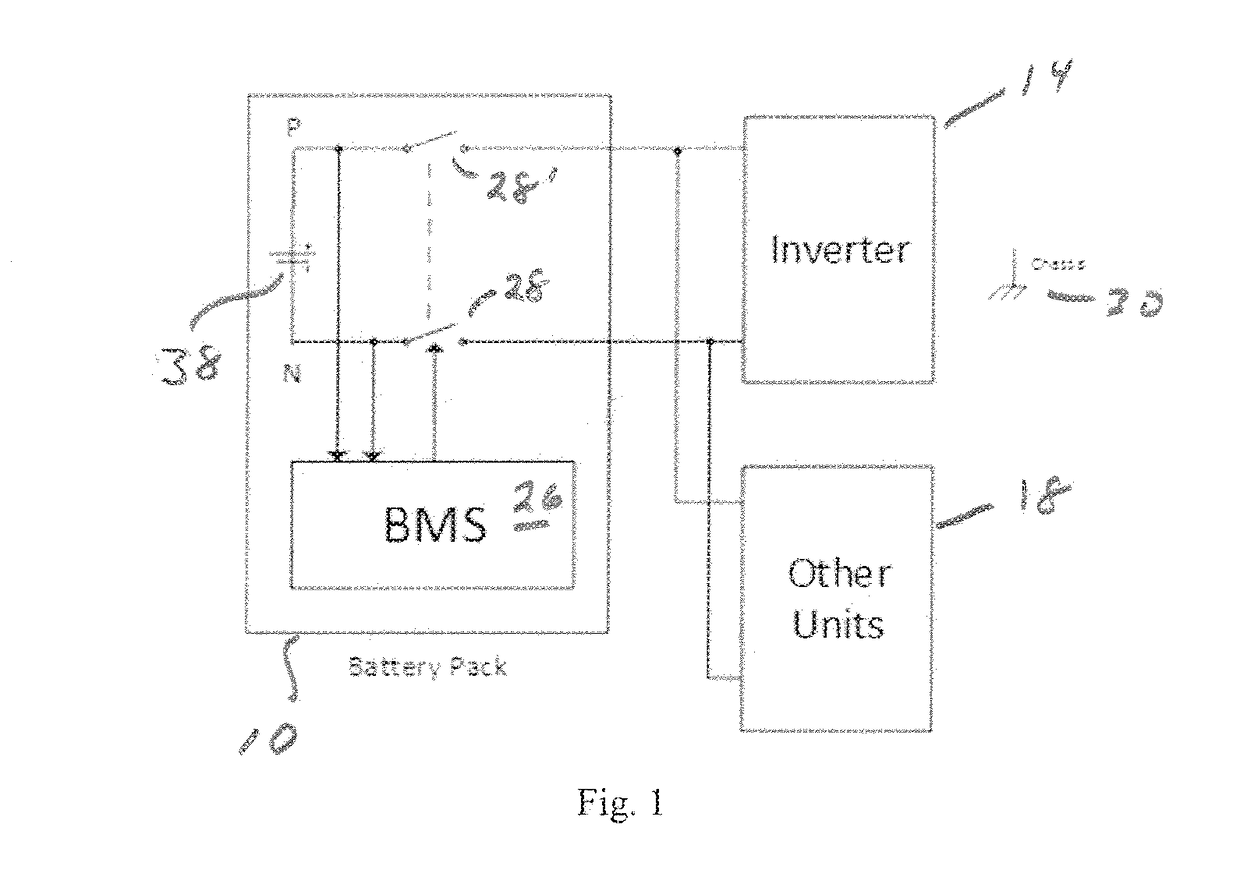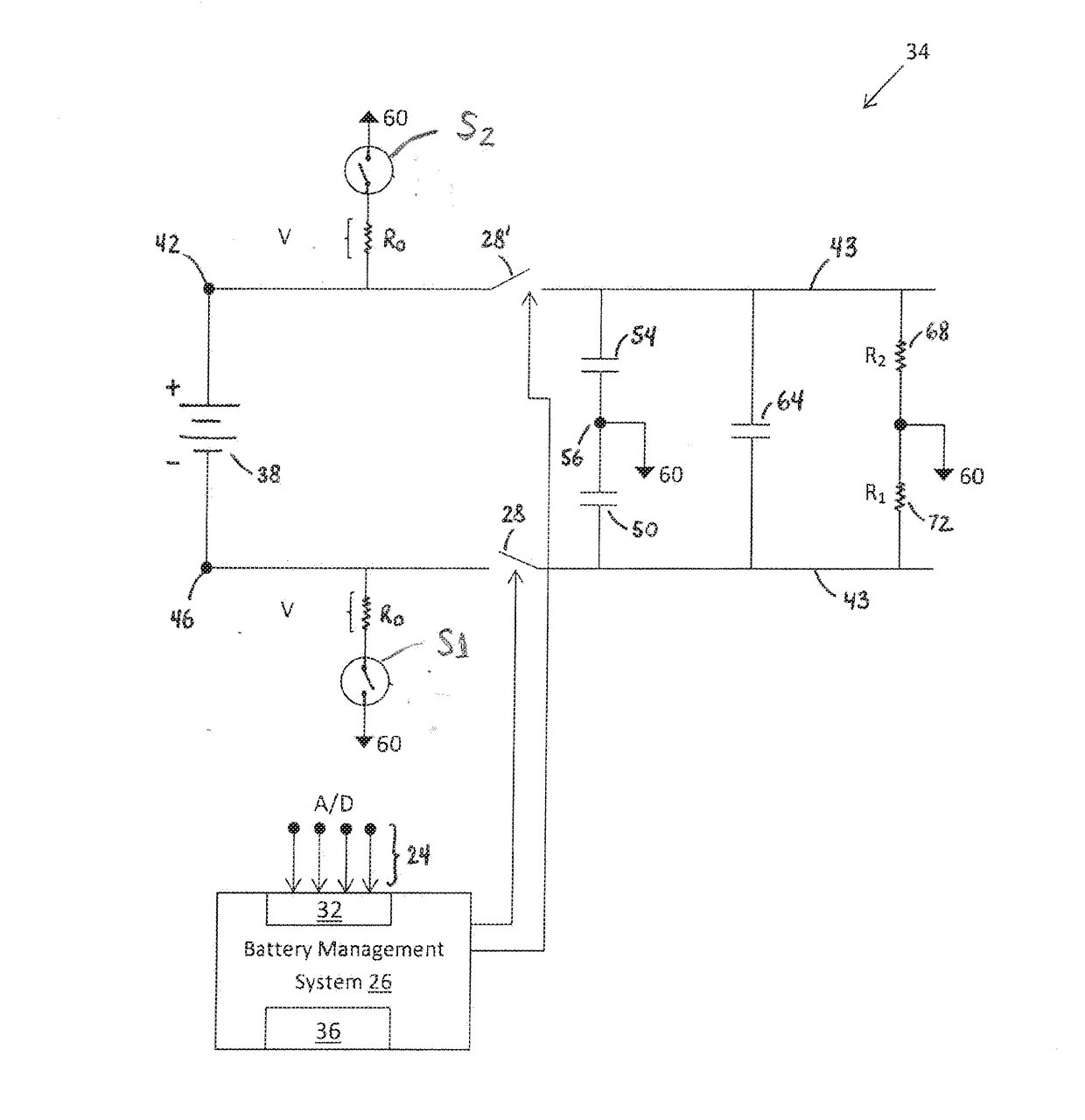Method for measuring electrical isolation of a vehicle chassis
a technology of electrical isolation and vehicle chassis, which is applied in the direction of preventing measurement, dielectric strength testing, instruments, etc., can solve the problems of large errors in any one measurement, potential electrocution hazards, and further reducing the performance and response time of saej1766 prior art measurement systems
- Summary
- Abstract
- Description
- Claims
- Application Information
AI Technical Summary
Benefits of technology
Problems solved by technology
Method used
Image
Examples
Embodiment Construction
[0020]The method of the invention eliminates the sensitivity of the measurement of the isolation resistance calculation to differential high voltage changes occurring in the circuit during measurement. As a result, a very accurate isolation resistance measurement can be obtained even while battery voltage is widely varying during the test period. This allows for a more accurate assessment of the quality of the electrical insulation, while providing significantly faster evaluation time. The significantly improved resistance estimation allows for less averaging and filtering resulting in quicker detection of isolation resistance failures.
[0021]Referring to FIG. 1, an embodiment of a vehicle electrical system is depicted with a battery pack 10 connected to an inverter 14 and other electrical components 18 that draw current from the battery pack 10. The battery pack 10 includes a battery 38, a battery management system 26 that monitors the battery voltage, and a pair of relays 28, 28′ c...
PUM
 Login to View More
Login to View More Abstract
Description
Claims
Application Information
 Login to View More
Login to View More - R&D
- Intellectual Property
- Life Sciences
- Materials
- Tech Scout
- Unparalleled Data Quality
- Higher Quality Content
- 60% Fewer Hallucinations
Browse by: Latest US Patents, China's latest patents, Technical Efficacy Thesaurus, Application Domain, Technology Topic, Popular Technical Reports.
© 2025 PatSnap. All rights reserved.Legal|Privacy policy|Modern Slavery Act Transparency Statement|Sitemap|About US| Contact US: help@patsnap.com



